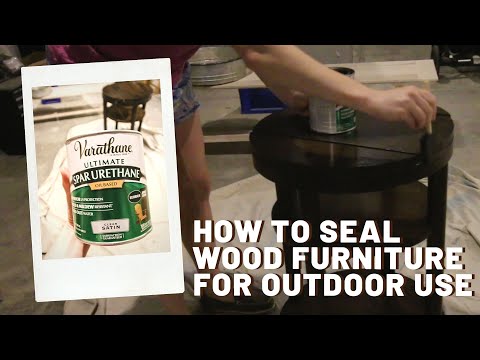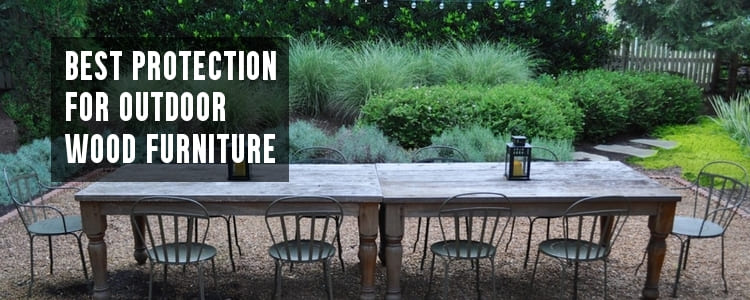
During the rainy season, we all want to make sure our outdoor wood furniture is protected.
Unfortunately, going out with friends and family has become rare due to the pandemic, so many of you might have moved your furniture outside to enjoy the sun.
If you haven’t thought of doing so, we suggest giving it a try without worrying about the effect of the weather on your expensive furniture. We have got you covered.
What is the best protection for outdoor wood furniture?
Without proper protection and care, your outdoor wooden furniture will suffer from water and high humidity, which might result in swelling or even rotting.
In this article, we will apprise you of the easiest and best protection procedures for outdoor wood furniture. Keep reading and choose the procedure that best suits you and your furniture.
Method 1
Sand wooden furniture
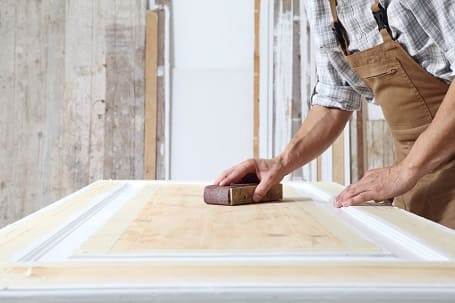
Step 1: Sanding
Sand the wooden furniture lightly with the hundred grit sandpaper. Make sure that you break sharp edges; This means that you roll or twist the edge so it is not sharp.
Doing so will help the finish bond to the edge and will not be easily destroyed when the edge comes in contact with the other object.
Remove the dust from the furniture and use a tack cloth. Remove all the dust particles from the furniture’s surface for the best result.
Step 2: Apply Finish
Apply any one of the following finishes to protect your outdoor wood furniture.
- Marine Varnish: Marine varnish is a finish designed for surfaces where a solid, water-resistant finish is required. It was initially made to protect the marine environment against severe saltwater and exterior surfaces such as boats and outdoor furniture. The finish contains UV light absorbers, which aid in protection from the sun. Although marine varnish provides long-lasting protection, you will need to resell the surface if the finish becomes worn and needs to be applied in the future.
- Outdoor Oil: The oil finish was made for outdoor wooden projects such as your furniture. The finish contains resin and oil, Ultraviolet inhibitors, heat stabilizers, and mildew inhibitors. All these elements make it the best finish for outdoor furniture. Another advantage of outdoor oil is that it may be used over other brands of exterior oil stain for increased protection. Unlike marine varnish, when the finish becomes worn, you can reapply it without needing any resanding.
Pro Tip: Start your work with the furniture in an upside-down position. This is because if the finish oversprays or runs, the blemish will be on the backside, where it can go unnoticed.
Method 2
Waterproof Outdoor Wood Furniture
There are three ways to waterproof your outdoor wood furniture. If you are waterproofing wood with a lighter color, avoid the first procedure in favor of the other two, as hand-rubbed oil turns yellow over time.
Technique 1: Use Tung oil to create a protective hand-rubbed finish
Tung oil is derived from the Chinese tung tree.
- A standard hand-rubbed oil blend consists of one part oil, one part mineral spirit, and one part polyurethane.
- Stir the mixture thoroughly.
- Use a natural bristle paintbrush to apply the mixture to dark-grained wood sanded and cleaned.
- Allow the oil to soak in the mix and reapply to areas that have been missed.
- Wipe off the excess oil with clean, dry rags.
- Allow the wood to dry completely.
- Drying can take a few hours or even the whole night, depending on the amount of oil in the mixture.
- After the mix is dry, sand it with a fine-grit sandpaper.
- Repeat the process until you get the desired finish.
Pro Tip: To save time, add more polyurethane for a more glossy look and quick drying. Similarly, reduce the quantity of poly if you want more working time.
Furthermore, oily rags that are used to wipe excess oil might combust. This happens because as the oil dries, it generates heat. Therefore, keep a bucket of water nearby as a precaution.
Technique 2: Sealants
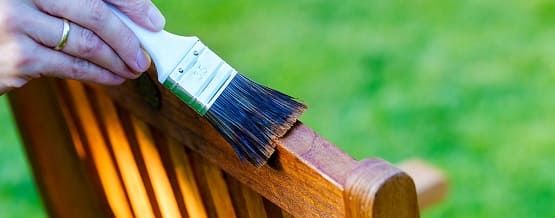
Use sealants for excellent protection.
- Polyurethane, varnish, and lacquer are tried sealants with the best waterproofing properties.
- Sealants are brushed or sprayed onto the sanded surface and allowed to dry before the wood is resanded.
Pro Tip: Apply sealant at room temperature. Furthermore, do not shake or briskly stir sealants before applying them to the wood.
Doing so can cause air bubbles that can remain on the surface, even after the sealant dries. Also, make sure that there is proper ventilation at the time of application.
Pros and Cons of Sealants:
- Polyurethane sealants contain various other solvents, helping you choose your favorite finish effect. This way, you can choose between a high-gloss shine or a gentle, soft sheen.
- Polyurethane sealants do not tend to yellow over time.
- Oil-based poly offers excellent durability. However, it requires brush clean-up. On the other hand, water-based poly only requires soap and water for clean-up.
- Lacquer is one of the best sealants for wooden furniture, giving a rich and uniquely scratch-resistant finish to deep-toned wood. However, it can develop a yellowish tinge over time that is considered unattractive in lighter woods.
- Lacquer emits fumes. Therefore, ventilation is mandatory. To be safer, work outdoors or open windows and use fans.
Technique 3: Stain sealant combo
- A stain sealant combo is perfect for saving time or protecting a large project.
- The stain sealant combo adds color and provides water resistance simultaneously.
- The combo contains color pigments with the addition of binders.
- The finish can be transparent or opaque depending on the concentration of pigment in the combo.
- Other than alkyd-based products, stain sealants soak in, and any excess evaporates.
- Alkyd-grounded stain-sealants leave a light surface coating on the wood, making them more suited for interior wood items, such as indoor exposed beams or rustic furniture.
- Outdoors and alkyd-based stain-sealers tend to peel if the wood is not perfectly clean and dry when applied.
Method 3
Exposure management
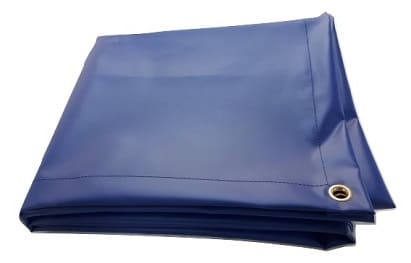
The easiest and the best way to protect your outdoor wooden furniture is to cover them so they are protected from the wind, rain, and sun.
Technique 1: Custom covers
You can find custom-made covers from the market or use a tarp to cover your furniture.
Outdoor covers are a fantastic option because they come in almost all standard sizes that will fit perfectly on your furniture.
You can use them to cover your umbrella, wooden table, chairs, or gas burners. They come in very handy if you buy them.
No products found.
Technique 2: Store away cushions and pillows
It is crucial also to protect the fabric of your outdoor wooden furniture from rain and other elements of nature. So whenever there is harsh weather, and you are not using your furniture, it is better to put them away.
You can store your pillows and cushions inside your home or in a shed, or put the cushions or pillows on a chair and push the chair under the table.
Method 4
Paint Wooden Patio Furniture

Regular maintenance and basic care do not have to be too much work for you. Paint is the best way to protect your wooden patio furniture. It is also an enjoyable activity which you can do with your family or your group of friends. Let’s begin!
Step 1: Get rid of any padding.
- When reviving your old furniture or trying to protect it, make sure it is worth restoring or protecting. Look for any rot or decay.
- Then, get rid of all the padding before moving on to the washing part.
Step 2: Clean your wooden furniture
- Put on your gloves and take your scrubbing brush.
- Soak your scrubbing brush in water mixed with dishwasher detergent (they are less in power, so they will not cause damage to your wooden furniture).
- Scrub with a light hand in the direction of the wood grain.
- Let the wood dry completely.
- Sand the rough spots on wood; keep in mind to sand it in the direction of the grain.
Step 3: Frames protection
The frame of any furniture acts like its pillars and is crucial for its structure; hence, you should also pay a lot of attention to protecting the edge of your table.
- Take your favorite paintbrush and a furniture protector.
- Apply the furniture protector to every part of the frame.
- For the long life of your furniture, it is very important to protect it against all the elements of nature, and a coat of furniture protector is the best way to do so.
Step 4: Paint time
Paint is a great way to protect your furniture against all the elements of nature. Some paints are specially made with waterproof qualities.
Moreover, almost all suitable quality paints protect your furniture against UV radiations of the sun, which can be very harmful to your wooden furniture and cause it even to crack.
- Oil paint with a spray-on sealant is an excellent option to go for.
- Always sand and paint your wooden furniture in the direction of the grain of your wooden furniture.
- Use a soft brush to paint for a more convenient experience.
- Everything that is used gets wear and tear; the same is the case with paint, so you would need to re-paint once or twice every year.
- Another way to go is that you can sand your furniture and coat it with oil or stain to protect it.
Step 5: Stain or water repellent
Who does not hate swollen wooden furniture and wants to protect its furniture from water at all costs? Water repellents are a great way to achieve your goal and save your wooden furniture from seeping water into it.
Another great advantage is that water repellents quicken up the evaporation method, which protects the wood of your furniture from any moisture that would have caused algae build-up.
This will ensure that your furniture stays fresh and does not rot away or get weak.
- Use a polyurethane sealer coat to make your stain or water-repellent last long. Apply it after you put on your stain or water repellent.
- For maximum protection, always make sure you reapply a good coat of stain and water repellent after every two years or so.
- Repellents with a high percentage of oil should be avoided. The reason is that oil has the power to attract particles like dust, which can ruin the look of your furniture.
Method 5
Use Rust-Oleum
Rust-Oleum is a wood Stain, spray paint, and concrete floor coating
No products found.
Conclusion
Wooden furniture is very costly to purchase in the first place, so it is our responsibility to protect it at all costs. Hence, this article discussed the best protection for outdoor wood furniture through paint, seal, varnish, and exposure management.
Unlike metal or aluminum, it demands more attention because it is more prone to damage due to water seepage. Therefore, protecting your wooden furniture from moisture should be your utmost priority, and after that comes the heat of the scorching sun.
Ensure your wooden garden furniture is in its most delicate state when your friends or family come over to your place. When it comes to the look of anything, its exterior comes first.
The same is the case with our wooden patio furniture, which is the highlight of our house and the first thing anyone will notice. I hope today’s article answers all your questions regarding the best protection for outdoor wood furniture.
- Read more: How to Wash Outdoor Cushions In Washing Machine.

